
Choosing a new TV is one of the most exciting things you can do for your home. Whether you’re setting up a new living room, creating a personal home cinema or feel it’s time for an upgrade on your old model, it’s a big step forward.
But is bigger always better? The quality of modern televisions is so high that it’s difficult to determine what makes a TV great and what makes a specific model right for you. You need to factor in the size of your room, the layout, and the position you’re most comfortable in to enjoy your new TV fully.
To achieve this, you must understand how to measure a TV and interpret the sizes appropriately. At Peter Tyson, we want to help you choose the perfect TV for your space, so we’ve created a comprehensive guide that helps you see TV sizes in a context that applies to you.
Table of contents
● How to measure and read TV sizes
● How to convert your TV measurements
● What is the ideal viewing distance from your TV?
● At what height should you place your TV?
● TVs of all sizes at Peter Tyson
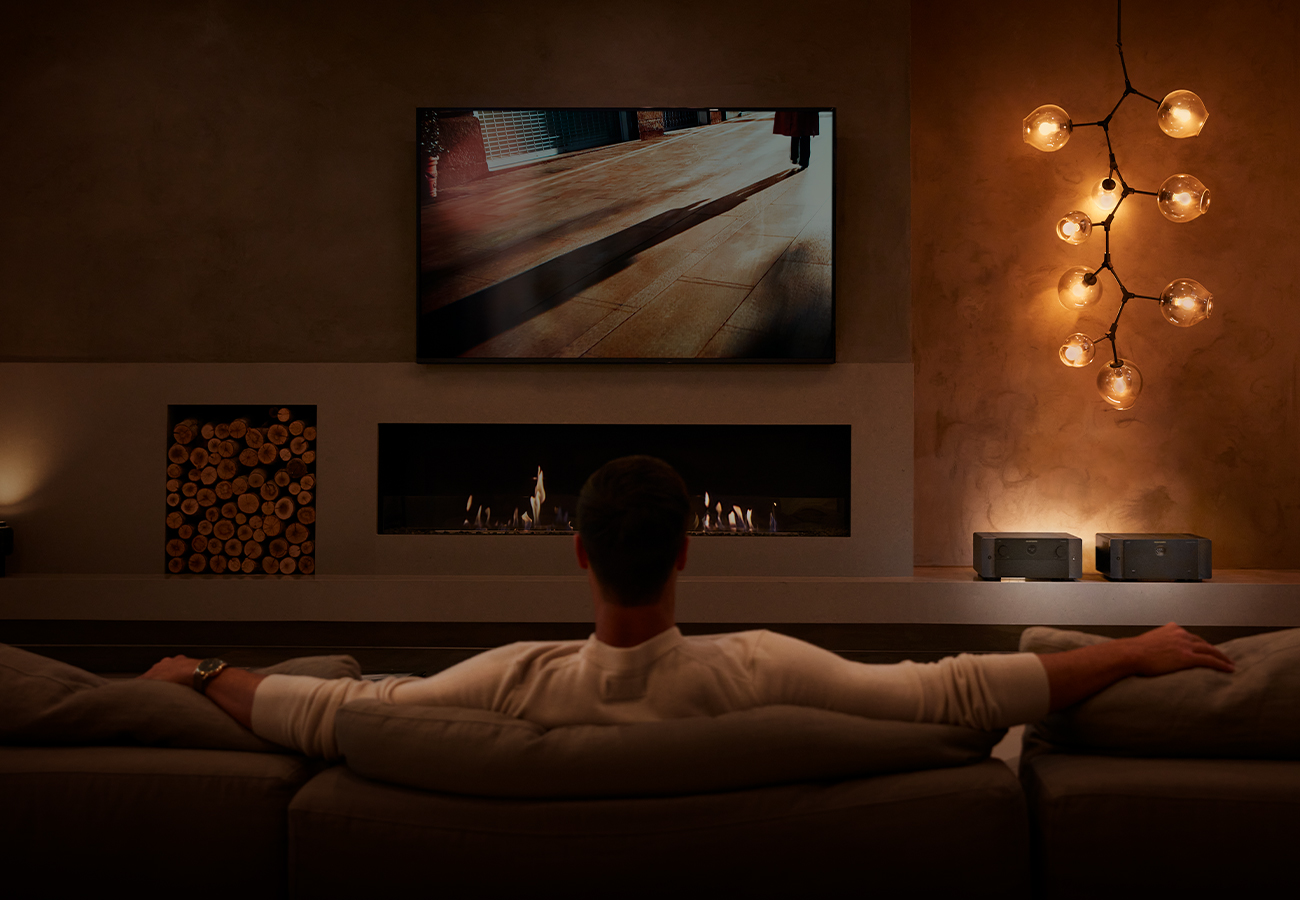

How to measure and read TV sizes
The best way to optimise your TV viewing experience is to balance size and space. While the assumption may be that the biggest TV screens are the highest quality, that isn’t always the case. A TV that’s too big for your space can cause eye strain, while one too far away can leave you squinting to get a clear picture.
Consult our table below to view how far you should sit from each TV and how the sizes translate to traditional width and height measurements.
TV sizes & seating distances table
| TV Size (inch) | Width (cm) | Height (cm) |
| 32-48” | 75-108 cm | 45-63 cm |
| 48-55” | 108-123 cm | 63-71 cm |
| 65-77” | 145-172 cm | 83-99 cm |
| 77-100” | 172-226 cm | 99-128 cm |
How to convert your TV measurements
Buying a new TV can be a big change to your space, so knowing your exact measurements is important. Ensure your TV fits your environment and meets your room's size and positioning requirements. We've broken down the width and height of each of our most popular TV sizes for you to note.
Small TV sizes
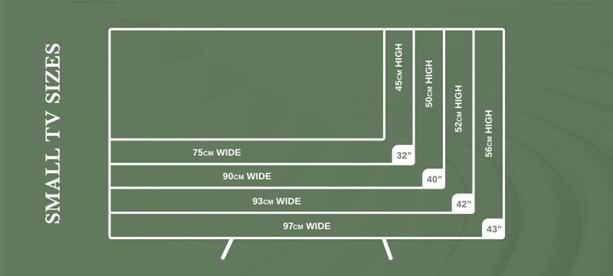

● 32” - 75cm wide & 45cm high
● 40” - 90cm wide & 50cm high
● 42” - 93cm wide & 52cm high
● 43” - 97cm wide & 56cm wide
Medium TV sizes
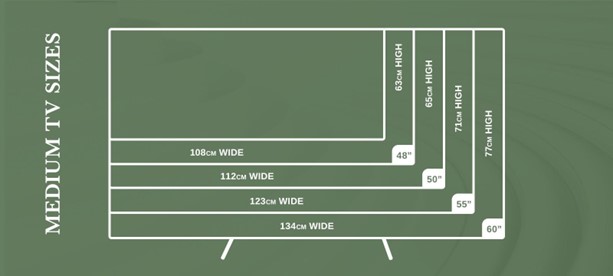

● 48” - 108cm wide & 63cm high
● 50” - 112cm wide & 65cm high
● 55” - 123cm wide & 71cm high
Large TV sizes
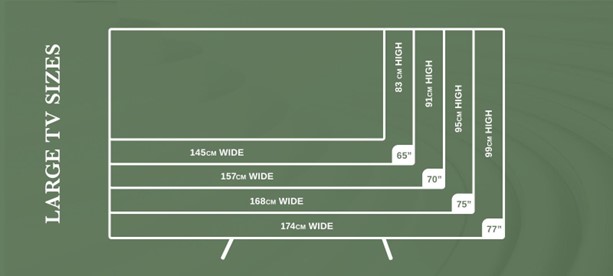

● 65” - 145cm wide & 83 cm high
● 70” - 157cm wide & 91cm high
● 75” - 168cm wide & 95cm high
● 77” - 174cm wide & 99cm high
Extra large TV sizes
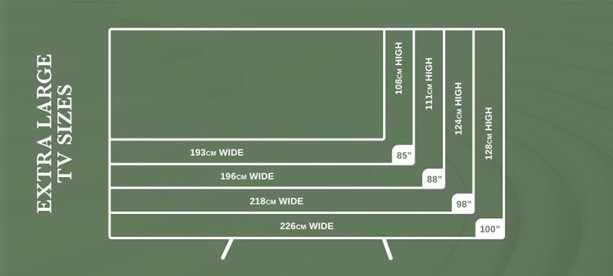

● 85” - 193cm wide & 108cm high
● 88” - 196cm wide & 111cm high
● 98” - 218cm wide & 124cm high
● 100” - 226cm wide & 128cm high
What is the ideal viewing distance from your TV?
| TV Size (inch) | Seating Distance (m) |
| 32-48” | 1.34-2 m |
| 48-55” | 2-2.3 m |
| 65-77” | 2.7-3.15 m |
| 77-100” | 3.15-4.2 m |
Finding the perfect TV viewing distance not only helps you protect your eyes from straining to make out what’s going on from a distance or fatigue from sitting too close, but it also helps balance your space as you can build your furniture and room layout around the focal point that is your TV.
Our table details approximately how far you should sit from your TV depending on the range of sizes available. However, size isn’t the only factor. Resolution and picture quality also play their part in helping you determine how far away you should sit from your TV.
Full HD TVs were used as a reference for our chart, and the rule for these screens is to take 4.2cm of viewing distance for each inch of diagonal screen size. For example, a 75” TV would require a 3.15m gap. This formula slightly changes when 4K TVs are factored in.
Suppose you have a 4K or Ultra HD TV; the popular formula changes to 2.1cm for every diagonal inch due to the higher quality of the picture and less apparent pixelation. Using the 75” TV example for comparison, you would want to sit around 1.58m from the 4K screen.
If you use a projector for your home entertainment needs, you can find the ideal seating distance here in our guide.
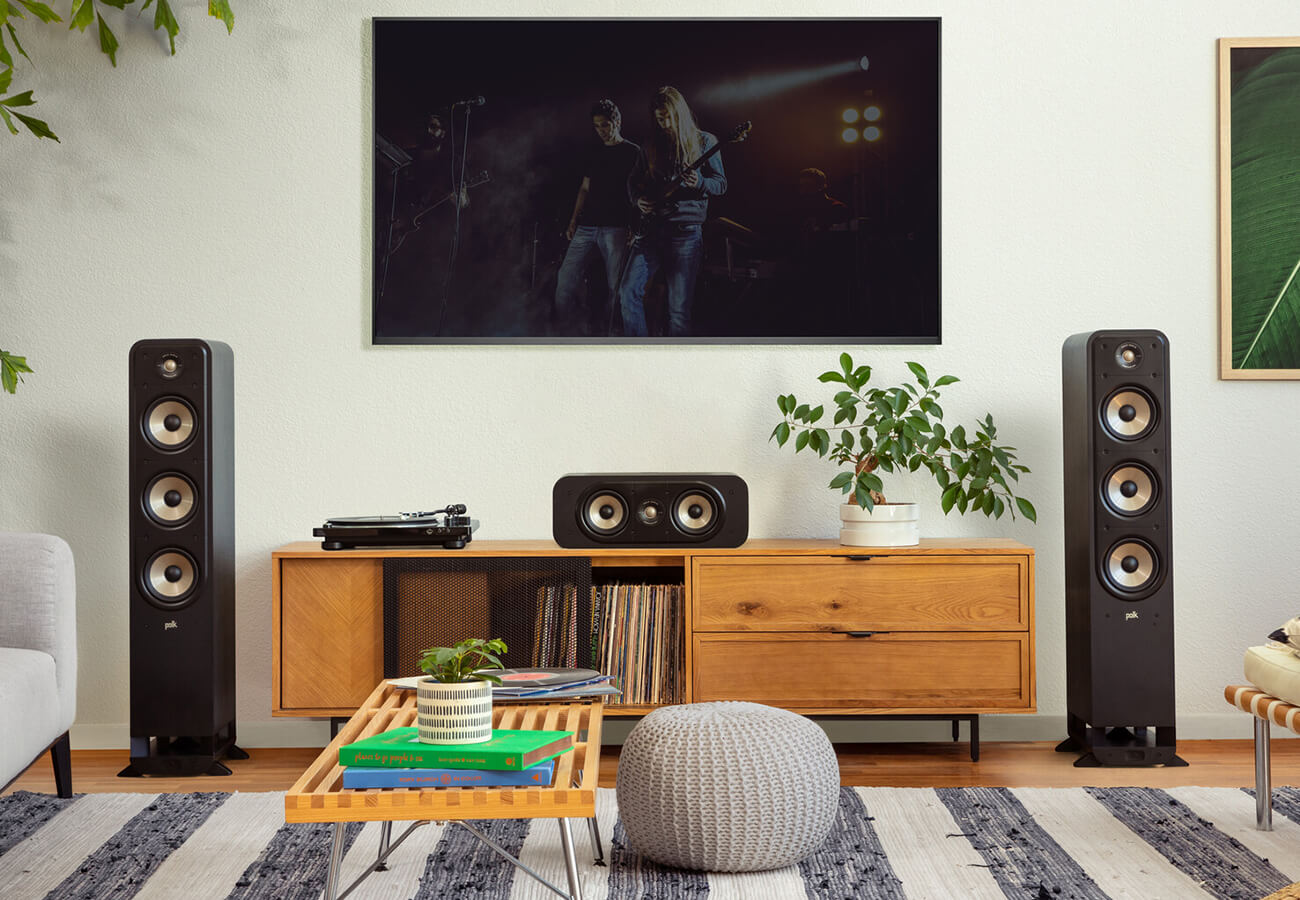

At what height should you place your TV?
While many mounted TVs are placed relatively high above the ground, this may not be optimal for enjoying your favourite films, programmes or live events. Lifting your eyes can cause strain and be tiring, so it's ideal to have the centre of the screen at approximately eye level or maybe just below.
Your height, room size and furniture should determine your TV's height. A common recommendation is to place your TV one metre from the floor, but you may need to slightly adjust this due to your height or the position of your sofa/chair.
Placing your TV higher is reasonable if you install it to watch from a bed or reclining furniture. Strain and tiredness will be less of an issue if your head is naturally tilted back. You may not always want to watch while lying down, though. So, we recommend choosing an adjustable mount to change the viewing position easily.
TVs of all sizes at Peter Tyson
We hope our guide has given you the knowledge and know-how to choose and set up your new TV at an appropriate distance for your space. So many great memories are made in front of the TV, so having the best view and image quality matters.
Whatever your situation, we’ll have the right TV for you at Peter Tyson. Browse our full range of televisions and discover exceptional quality from leading brands.
Related posts
● How to Create Your Own Home Cinema
● All Home Cinema Sound Systems Guide